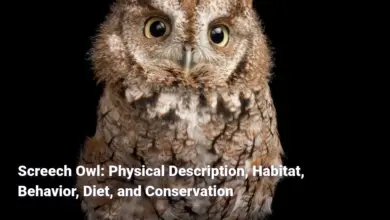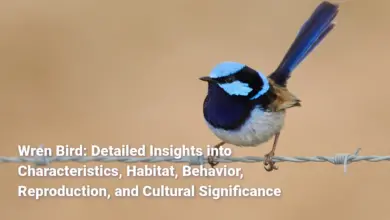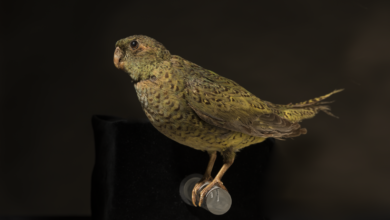Hawks Birds: Comprehensive Guide to Types, Characteristics, Habitat, Diet, Migration, and Conservation
An In-Depth Guide to Hawks Birds: From Types and Characteristics to Habitat, Diet, Migration, and Conservation Efforts
Hawks Birds are captivating birds of prey, admired for their prowess in the air and their vital roles in ecosystems. With over 200 species worldwide, they inhabit various environments, from vast grasslands to dense forests and even urban landscapes. Hawks can effortlessly glide through the skies, displaying grace and agility that capture the attention of birdwatchers and nature enthusiasts alike. Their keen eyesight and hunting skills make them master predators, forming a crucial part of their ecological niches. Not only do these birds serve an important purpose in controlling populations of small mammals and birds, but they also feature prominently in cultural symbolism from ancient mythology to modern literature. This article delves into the types of hawks, their distinct characteristics, hunting techniques, habitats, dietary preferences, migration patterns, cultural significance, and conservation efforts, providing a comprehensive overview of these remarkable avian creatures.
Types of Hawks Birds
Hawks are generally classified into various categories based on their physical characteristics and hunting techniques. The primary divisions include the Accipiter hawks, known for their agility and speed in hunting smaller birds, and the Buteo hawks, which are more robust and adaptable to various habitats. This classification is reminiscent of a dance, with each type performing different roles in the ballet of nature.
Here’s a summary of several notable hawk types:
| Type of Hawk | Description | Notable Species |
|---|---|---|
| Accipiter Hawks | Agile and nimble, these hawks are specialized for hunting smaller birds. | Northern Goshawk, Cooper’s Hawk, Sharp-shinned Hawk |
| Buteo Hawks | Generally larger with broad wings, these hawks exhibit a variety of hunting styles and are adaptable to different habitats. | Red-tailed Hawk, Red-shouldered Hawk, Ferruginous Hawk |
| Circus Hawks | Not as commonly referenced, this group includes some Accipiter species known for their soaring ability. | N/A |
Accipiter hawks, with their short wings and long tails, resemble skilled athletes, darting through dense woodland to catch smaller, elusive prey. On the other hand, Buteo hawks possess broad wings and heavier bodies, allowing for powerful flight and an ability to soar for extended periods, akin to majestic ships sailing effortlessly across the open skies. Each type presents unique adaptations that facilitate their hunting techniques and survival strategies.
Accipiter Hawks Birds
The Accipiter genus comprises about 50 species, which are widely recognized for their bird-catching prowess. These hawks are built for speed and agility, showcasing remarkable aerial skills. Their short wings and long tails allow for rapid acceleration and tight turns, making them ideally adapted for hunting in wooded environments.
Key Accipiter Species:
- Northern Goshawk (Accipiter gentilis)
- Known for its formidable strength and remarkable hunting abilities, the Northern Goshawk is a larger species that primarily hunts birds and small mammals.
- Cooper’s Hawk (Accipiter cooperii)
- A medium-sized hawk, the Cooper’s Hawk is an exceptional hunter of songbirds. Its adaptability enables it to thrive in urban environments, where it preys on a variety of avian species.
- Sharp-shinned Hawk (Accipiter striatus)
- The smallest hawk species in the Accipiter genus, the Sharp-shinned Hawk is known for its exceptional maneuverability. It specializes in catching small birds, often seen darting through trees in pursuit of swift prey.
Accipiters have keen eyesight, allowing them to identify potential prey from a distance. Their hunting methods generally involve surprise attacks, utilizing their agility to navigate through branches as they chase smaller birds. If one imagines a skilled dancer executing quick and precise movements, it aptly reflects the behavior of these raptors in pursuit of their quarry.
Buteo Hawks
The Buteo genus represents a different group of Hawks Birds commonly referred to as buzzards in some regions. These hawks exhibit greater size variability and are recognized for their adaptability to diverse habitats, making them a versatile family of raptors.
Notable Buteo Species:
- Red-tailed Hawk (Buteo jamaicensis)
- One of the most recognizable hawks in North America, the Red-tailed Hawk is distinguished by its reddish-brown tail and broad wings. Its vast range and varied diet allow it to thrive in numerous environments.
- Broad-winged Hawk (Buteo platypterus)
- Known for its migratory behavior, the Broad-winged Hawk gathers in large flocks. It has a unique hunting method, often soaring and gliding at great heights.
- Ferruginous Hawk (Buteo regalis)
- The largest of the North American buteos, this hawk is particularly notable for its striking appearance and reliance on open spaces for hunting small mammals.
These hawks exhibit a remarkable ability to soar in thermal currents, akin to gliders effortlessly navigating the skies. Their broad wings provide stability while they search for prey from elevated vantage points, allowing them to cover large areas with minimal exertion. The adaptability of Buteo hawks emphasizes their ecological success, thriving in an array of habitats from deserts to forests.
Circus Hawks
Though less commonly referenced, Circus hawks often include those in the Accipiter genus that exhibit buoyancy and precision in hunting, particularly compelling in their flight dynamics. For example, the Northern Goshawk shines in this category, reflecting agile aerial performances, while the Broad-winged Hawk exemplifies circumnavigating with grace during migrations.
Notable Species
- Northern Harrier (Circus cyaneus)
- Characterized by its long wings and lighter body, the Northern Harrier is an adept hunter of small mammals and birds. It relies on low, gliding flights over fields and marshes, showcasing strategies distinct from traditional hawk hunting.
The lightness of their bodies allows them to glide with effortless grace, much like a dancer gliding across a stage. These breathtaking displays highlight the various roles that different hawk categories play in the ecosystem, illustrating their diverse adaptations in pursuit of survival.
Characteristics of Hawks Birds
Hawks Birds possess a variety of distinguishing characteristics that serve to enhance their hunting efficiency and adaptability. These traits manifest physical attributes, such as size, coloration, and structure, as well as behavioral nuances integral to their survival.
- Vision: Hawks are renowned for their extraordinary eyesight, capable of detecting prey from significant distances. Their vision is estimated to be up to eight times better than that of humans, allowing them to spot small movements even at great heights.
- Body Structure: The body shape of hawks including broad wings, sharp talons, and strong, hooked beaks supports their predatory lifestyle. The combination of these traits enables them to capture and consume a wide range of prey, from small mammals to birds.
- Coloration: Many hawks exhibit a range of color patterns, which serve as camouflage while hunting. The varied hues help them blend into their surroundings, providing an advantage as they stalk or ambush prey.
- Behavioral Adaptations: Hawks are known for their territorial behavior, often establishing nesting areas and defending them against intruders. While many species are solitary hunters, some, like the Harris’s Hawk, exhibit cooperative hunting strategies, allowing them to tackle larger prey more effectively.
Through these characteristics, Hawks Birds exemplify the culmination of evolutionary adaptations that enhance their roles as top-level predators. Their remarkable attributes make them not just successful hunters but also key players in their respective ecosystems, emphasizing their importance in maintaining ecological balance.
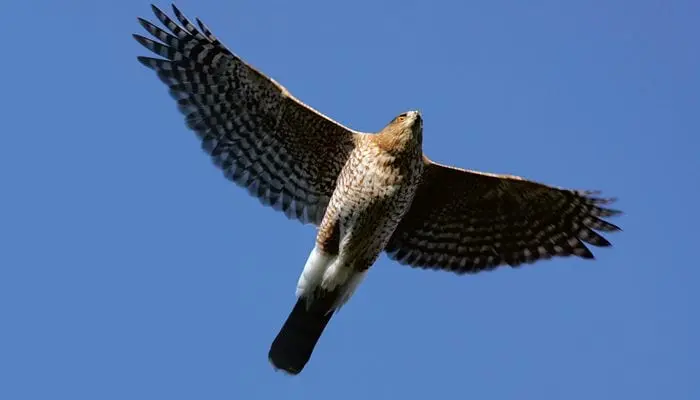
Physical Features
Hawks Birds display an array of physical attributes that are not only visually striking but also integral to their hunting prowess. Understanding these features provides valuable insight into their ecology and behavior.
- Size and Weight: Hawks range significantly in size, from the diminutive Sharp-shinned Hawk at about 10-14 inches in length to the larger Ferruginous Hawk, which can reach lengths of over 2 feet. Their weight can also vary widely, with some species weighing as little as a few ounces to more than three pounds.
- Wingspan and Flight Abilities: Typically, hawks possess long, broad wings, allowing for efficient soaring and gliding. For instance, the Red-tailed Hawk has a wingspan that can reach up to 52 inches, enabling it to soar effortlessly, riding thermal currents to conserve energy.
- Talons and Beak: Hawks sport powerful talons designed for catching and gripping prey. Their hooked beaks aid in tearing flesh, making them formidable predators. The size and strength of beaks can vary among species, reflecting their feeding habits.
- Coloration: Color plays a crucial role in their adaptation. While many species exhibit shades of brown and white that provide effective camouflage against tree bark or foliage, others display more vibrant colors, particularly during mating seasons or regional variations.
- Sexual Dimorphism: In many hawk species, females are generally larger than males, a trait attributed to their need for increased energy demands during nesting and egg-laying. This size difference is notable among various species, influencing dynamics in hunting and mating rituals.
Through their physical features, Hawks Birds have become adept predators that can locate, capture, and consume prey with remarkable efficiency. These adaptations not only allow for successful hunting but also enable hawks to thrive in their natural habitats, underscoring their evolutionary success and ecological significance.
Behavioral Traits
Hawks Birds exhibit a range of behavioral traits that reflect their adaptations to diverse environments and predatory lifestyles. These behaviors encompass not only their hunting practices but also their social structures and territorial instincts.
- Territorial Behavior: Hawks are notably territorial creatures. During the breeding season, they establish and patrol their territories to defend their nests from potential intruders. This can involve vocal displays, aerial flights, and even physical confrontations with rivals.
- Social Interaction: While the majority of hawks are solitary hunters, some species like the Harris’s Hawk are known for their social nature. They exhibit cooperative hunting behaviors, where groups collaborate to catch larger prey, showcasing a social dynamic not typically seen in other raptor species.
- Nesting Habits: Hawks are strategic nest builders, selecting elevated sites such as tall trees or cliffs to construct their nests. They use various materials, including twigs, grasses, and feathers, to create secure and insulated environments for their young.
- Hunting Techniques: Hawks display an array of hunting strategies that vary among species. Common techniques include high soaring to spot prey, optimal perching to observe from a distance, or ambushing using speed and agility. These strategies emphasize their adaptability, as different species refine their approaches based on habitat and prey types.
- Migration and Seasonal Behavior: Many hawks are migratory, traveling to find suitable breeding or wintering grounds. Their migration patterns often align with seasonal changes, driven by prey availability and environmental conditions.
Through these behavioral traits, hawks not only thrive within their respective ecosystems but also play important roles in maintaining ecological balance. Their skills in hunting and adaptability to varied environments showcase the evolutionary sophistication of this remarkable group of birds.
Hunting Techniques
Hawks Birds employ a variety of hunting techniques that highlight their adaptability and predatory skills. These methods allow them to effectively capture prey, which varies based on their species, habitat, and available resources.
- Soaring Hunts: Hawks often utilize thermal updrafts to soar high above the ground, scanning the landscape for potential food sources. This method allows them to maintain energy while surveying vast areas, making it easier to spot small mammals, birds, or reptiles.
- Perch and Pounce: Common among species like the Red-tailed Hawk, this technique involves selecting a prominent perch such as a tree branch or utility pole from which to observe the ground below. Once prey is spotted, the hawk swoops down with impressive speed to seize its target.
- Stoop Hunting: Although more common in falcons, some hawks also employ a form of stooping or diving. By gaining altitude and diving rapidly toward their prey, they can surprise smaller birds or mammals and catch them off guard, leveraging their speed for a successful strike.
- Ambush Tactics: Many Accipiter hawks, like the Sharp-shinned Hawk, are proficient at ambushing their prey. By remaining concealed within vegetation, they can launch quick, short-range attacks on unsuspecting birds, utilizing their agility and speed to catch their quarry.
- Cooperative Hunting: Some species exhibit cooperative hunting behaviors, notably the Harris’s Hawk. In these groups, multiple hawks work together to flush out prey or surround a target, demonstrating remarkable social dynamics that enhance their hunting efficiency.
Through these varied techniques, hawks display extraordinary adaptability as they hunt for sustenance. Their ability to switch tactics depending on environmental conditions and prey type showcases their status as apex predators in a diverse array of ecosystems.
Habitat of Hawks Birds
Hawks Birds are versatile birds that thrive in diverse habitats, ranging from expansive grasslands to dense forests and even urban environments. Their adaptability allows them to occupy a variety of ecological niches, each showcasing their unique hunting strategies and behaviors.
- Forests: These environments provide cover and nesting opportunities for various hawk species. Forested areas support Accipiter hawks like the Cooper’s Hawk, which prefers wooded habitats where it can deftly navigate through trees while hunting for small birds. The tall trees not only provide nesting sites but also act as lookout perches for hunting.
- Grasslands: Open spaces with grasses and occasional shrubs serve as ideal habitats for Buteo hawks such as the Red-tailed Hawk. Their soaring abilities and broad wings make them well-suited for hunting small mammals like rodents and rabbits in these expansive areas, where visibility is key.
- Urban Areas: Interestingly, certain hawk species have adapted remarkably well to urban environments. The Cooper’s Hawk thrives in cities, preying on pigeons and doves available in abundance. Urban landscapes often offer tall buildings and green spaces that mimic their natural habitats, allowing for successful nesting and hunting.
- Wetlands: Hawks are also found near wetlands where prey such as amphibians and small mammals are plentiful. The Red-shouldered Hawk often inhabits these areas, taking advantage of the diverse food sources available.
- Deserts: Some hawk species are well-equipped to thrive in arid environments, where they hunt for small mammals and birds within the sparse vegetation. The Ferruginous Hawk is known to inhabit open areas with limited tree cover, where it can survey a wide expanse for potential prey.
Through their ability to occupy multiple habitats, hawks play important roles in various ecosystems. Their adaptability to environmental changes ensures their survival, while the diversity of their hunting grounds underlines their importance in maintaining ecological balance.
Forests
Forests serve as crucial habitats for several hawk species, offering nesting sites, hunting grounds, and cover from larger predators. The intricate structure of forests allows Hawks Birds to take advantage of various resources available to them.
- Nesting Sites: Many hawk species prefer to build their nests high up in trees, away from ground predators. The Red-shouldered Hawk, for example, selects sites near water bodies, where they can hunt an array of small mammals and reptiles.
- Hunting Strategies: Hawks such as the Cooper’s Hawk and Northern Goshawk excel in wooded environments, using their agile flight to maneuver through tree branches in search of prey. They can launch surprise attacks on small birds, exploiting the dense canopy for cover.
- Ecological Interactions: The presence of hawks in forest ecosystems helps regulate populations of prey species. By keeping numbers of smaller birds and rodents in check, they contribute to a balanced ecosystem, allowing for the diverse flora and fauna inherent to forest habitats.
- Adaptations to Forest Life: Hawks in forested areas have developed specific adaptations that enhance their hunting capabilities. For instance, they may adopt stealthy behavior, remaining still and observing potential prey movements before launching into flight.
These forest environments highlight the interconnectedness of hawks with their habitats, reflecting their vital role in ecological health. By regulating prey populations and maintaining balance, hawks in forests exemplify the importance of these ecosystems for their overall survival.
Grasslands
Grasslands represent another key habitat for Hawks Birds, providing open spaces that facilitate their hunting behavior and requirements for nesting. The dynamics of this environment support several species, enhancing their adaptability and survival skills.
- Visibility and Hunting: Grasslands offer expansive views that enable hawks to spot potential prey from a distance. Hawks like the Red-tailed Hawk often hunt by perching on elevated posts or flying high to scan for small mammals such as rabbits and rodents, making these habitats prime hunting grounds.
- Ecological Role: In these ecosystems, hawks play an essential role in controlling populations of small mammals, which can impact agricultural practices and plant communities. By preying on rodents, they help maintain biodiversity and promote the health of grassland habitats.
- Nesting Habits: Grasslands provide nesting opportunities, often in low shrubs or under tufts of grass. The open landscape also allows hawks to gather materials necessary for constructing their nests while providing ample space for raising their young.
- Breeding and Feeding Dynamics: During spring and summer months, hawks in grasslands can be more active hunters as prey becomes abundant. Their adaptability, evident in shifting hunting strategies, allows them to take advantage of changing conditions within this habitat.
By maintaining the delicate balance between predator and prey, hawks in grasslands play an integral role in fostering vibrant ecosystems. Their hunting efficiency, combined with their ecological importance, underscores the value of grassland habitats for birds of prey.
Urban Areas
Surprisingly, many Hawks Birds have adapted well to urban environments, utilizing available resources while navigating the challenges presented by human-dominated landscapes. Urban areas have become unique habitats for several hawk species.
- Nesting opportunities: In cities, hawks like the Cooper’s Hawk often find nesting sites in tall buildings, bridges, and parks. The structure of urban environments can mimic natural habitats, providing necessary protection and vantage points for hunting.
- Feeding strategies: The abundance of prey in urban areas can often lead to thriving hawk populations. Many urban hawks feed on introduced species such as pigeons and doves, taking advantage of the diverse food sources readily available in populous areas.
- Adaptation to Change: Urban hawks exhibit remarkable adaptability, altering their hunting styles to navigate the unique challenges posed by human environments. They learn to identify safe perches and alternate hunting sites to optimize their foraging efforts.
- Public Awareness: The presence of hawks in urban settings has fostered a newfound interest in wildlife among city residents. Community engagement and educational campaigns can raise awareness about these birds’ ecological roles, fostering appreciation for urban wildlife.
The adaptability of Hawks Birds to urban environments signifies their resilience and ability to thrive amid human encroachment. Their presence reminds us of the interconnectedness between nature and urban development, compelling us to consider conservation measures even in city landscapes.
Diet of Hawks Birds
Hawks Birds are carnivorous birds that primarily prey on a variety of animals, including small mammals, birds, reptiles, and insects. Their diets can vary significantly depending on their species, habitat, and the availability of food sources, indicating their remarkable adaptability.
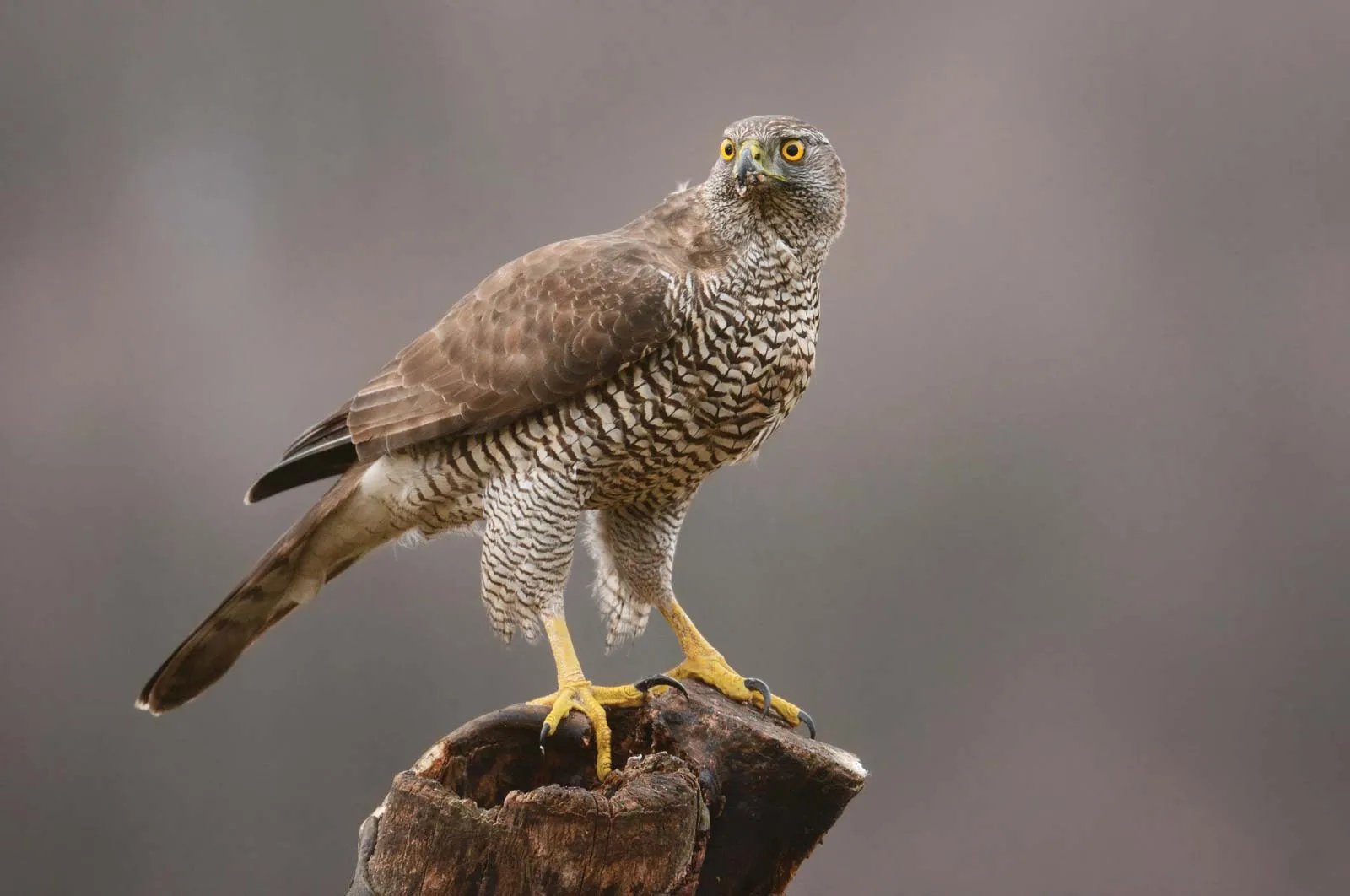
Prey Preferences
Hawks Birds target various prey based on their size, habitat, and individual hunting styles. Here are the primary food sources for many hawk species:
- Small Mammals: Many hawks predominantly hunt small mammals like mice, voles, rabbits, and squirrels. These animals provide essential nutrition, particularly in wooded and grassland habitats. The Red-tailed Hawk, for instance, commonly preys on rabbits, while the Ferruginous Hawk focuses on small mammals like prairie dogs.
- Birds: Hawks such as the Cooper’s and Sharp-shinned hawks primarily target smaller birds. Cooper’s hawks favor medium-sized songbirds, while Sharp-shinned hawks will typically consume smaller birds, often making up a significant portion of their diet. This avian predation illustrates their agility and hunting prowess.
- Reptiles and Amphibians: Hawks supplement their diets with reptiles like snakes and lizards. The Red-shouldered Hawk, for example, may consume frogs and snakes alongside small mammals. This versatility showcases their opportunistic feeding strategies.
- Insects: Many hawks may also incorporate insects into their diet, especially during warmer months when these prey items abound. Swainson’s Hawks are particularly known for targeting grasshoppers and insects in agricultural fields, highlighting their flexibility in feeding habits.
- Carrion: Occasionally, hawks will eat carrion the remains of dead animals. This behavior varies by species and environmental availability, providing an alternative food source during lean times.
By exhibiting such diverse dietary preferences, hawks demonstrate their ability to adapt to seasonal changes and resource availability. The adaptability in their feeding strategies enables these birds to thrive in variable ecosystems.
Hunting Strategies
Hawks Birds employ various hunting strategies that reflect their adaptability and predatory skills. Here are some notable techniques:
- Soaring Hunts: Many hawks utilize thermal updrafts to soar high above the ground, scanning the landscape for potential food sources. This method allows them to cover vast distances while conserving energy.
- Perch and Pounce: Some species, like the Red-tailed Hawk, prefer to perch on elevated structures trees, poles, or buildings from where they can observe the surrounding landscape. Once they spot prey, they swoop down quickly to capture it.
- Aerial Pursuit: Smaller hawks, such as Cooper’s and Sharp-shinned Hawks, are known for their aerial hunting techniques, characterized by high-speed chases through dense vegetation to catch agile birds.
- Ambush Techniques: The Sharp-shinned Hawk demonstrates ambush tactics, using the element of surprise to dart through tree branches in pursuit of smaller birds, capitalizing on its agility and speed.
- Cooperative Hunting: Some hawk species, such as Harris’s Hawks, exhibit cooperative behaviors, where multiple individuals work together to hunt larger prey or increase hunting efficiency.
Through these varied techniques, Hawks Birds showcase their remarkable adaptability in hunting for sustenance. Their ability to switch tactics depending on prey type and environmental conditions illustrates their efficiency as apex predators.
Seasonal Dietary Changes
In addition to varying prey preferences, Hawks Birds adapt their diets according to seasonal changes, reflecting fluctuations in availability and necessity:
- Spring and Summer: During these seasons, hawks typically have more abundant food sources available. The breeding season often drives an increase in hunting activity as adult hawks need to feed themselves and their young. Prey such as rabbits and songbirds can become primary focuses during this time.
- Fall and Winter: As temperatures drop and food sources become scarcer, hawks may shift to alternative prey, often preying more heavily on smaller mammals that remain active. For example, they might favor rodents, which are easier to catch in winter when they are less mobile.
- Migration Influences: Some hawks, particularly migratory species, may adjust their diets based on the availability of prey along their routes. During migration, they may rely on different food sources as they navigate through diverse ecosystems.
- Adapting Hunting Techniques: Seasonal changes can necessitate adjustments in hunting strategies as well. For instance, in winter conditions when snow covers the ground, Hawks Birds may develop new techniques to hunt effectively, often requiring patience and adaptability to locate food.
These dietary adaptations and seasonal changes reflect the hawk’s ability to thrive in varied environments while maintaining the ecological balance as top predators. By understanding their hunting behaviors and dietary preferences, conservation efforts can remain focused on protecting these vital raptors and their habitats.
Migration Patterns of Hawks Birds
Hawk migration refers to the seasonal movements of these birds of prey from breeding grounds in the northern hemisphere to wintering areas in the south. This phenomenon is complex, influenced by various ecological and environmental factors that dictate the timing, routes, and behaviors exhibited by migrating Hawks Birds.
Reasons for Migration
- Food Availability: One of the primary reasons for migration is the seasonal change in prey availability. As temperatures drop in the fall, food sources can become scarce, prompting hawks to seek warmer climates where they can find ample sustenance.
- Breeding Seasons: Migration often coincides with breeding seasons, as hawks return to specific areas to mate and raise their young. Environmental cues, such as changes in daylight length and temperature, stir these migratory movements as breeding opportunities arise.
- Climate Factors: Hawks are also influenced by climate conditions, such as temperature fluctuations and precipitation patterns. Rising temperatures can affect the timing of migrations, leading some species to arrive at their wintering grounds earlier or later than usual.
- Environmental Influences: Weather patterns, habitat changes, and food availability all affect the timing and success of migration. Favorable conditions encourage migration, while harsh weather may deter or delay movement.
Understanding the reasons behind hawk migration helps illuminate the intricate balance of their ecological roles and the environmental factors that influence their behavior.
Common Migration Routes
Hawks Birds follow established migratory pathways to maximize efficiency and access to food resources. Some key migratory routes include:
- Atlantic Flyway: This route runs along the eastern seaboard of the United States, connecting migratory hawks traveling between Canada and Central America.
- Pacific Flyway: Stretching along the west coast, this flyway is crucial for hawks migrating between northern habitats and warmer winter locations.
- Central and Mississippi Flyways: These comprehensive routes often guide hawks through the heartland of the U.S. toward their southern destinations.
- Caribbean Flyway: Many hawks, particularly those breeding in northern regions, take detours through the Caribbean islands during migration an essential stopover for feeding and resting.
By utilizing these established migratory routes, Hawks Birds can capitalize on the availability of food and environmental cues, enhancing their chances of successful migration.
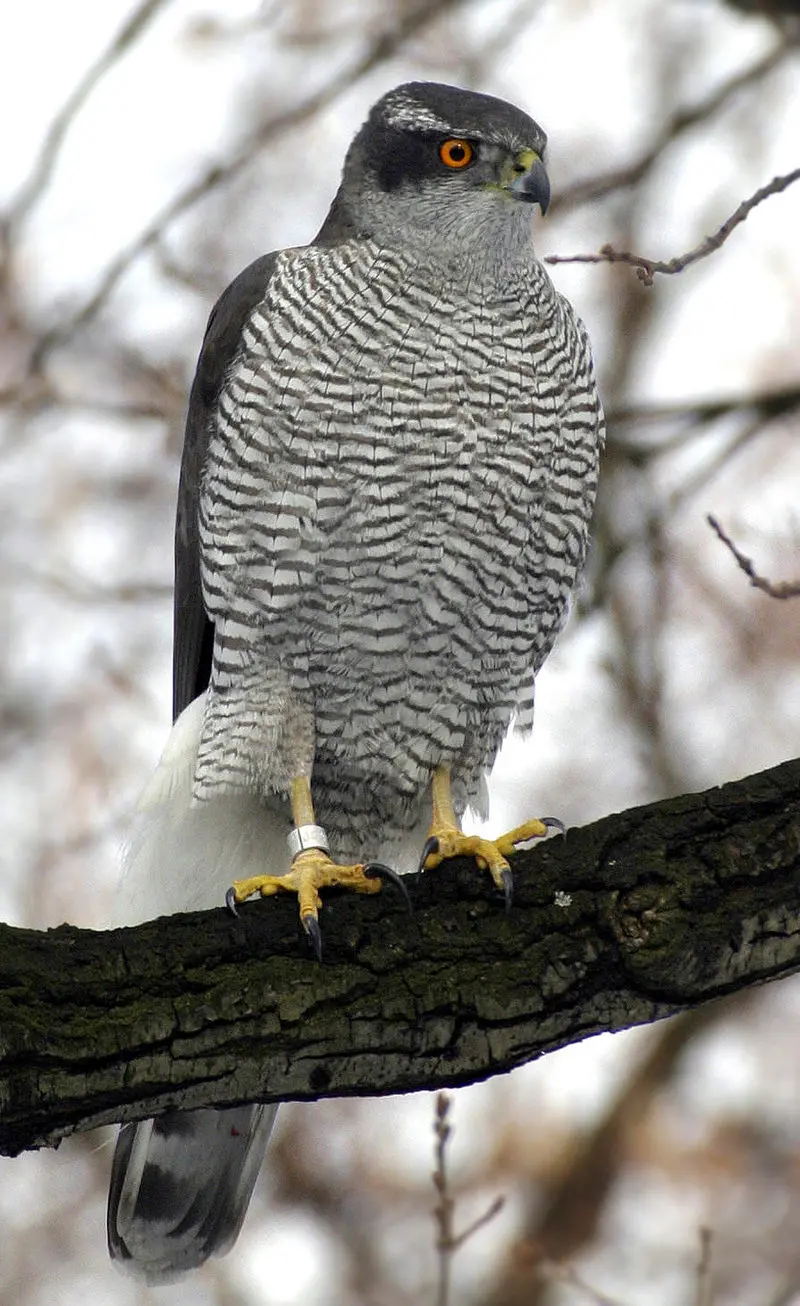
Impact of Climate Change
The impact of climate change on hawk migration patterns is a growing area of concern. Research suggests that rising temperatures may drive changes in food availability and migratory timing. Some key aspects include:
- Altered Prey Availability: Climate change can shift the distribution of prey species, leading to mismatches in food resources for migrating hawks. Insects, for instance, may emerge earlier in the season, impacting hawks’ migratory decisions.
- Changes in Migration Timing: Some studies suggest that hawks are arriving at their wintering grounds earlier than in previous decades. This shift may reflect adaptive behaviors responding to altered environmental cues and prey availability driven by climate change.
- Emerging Refuge Populations: As some hawk species adapt to changes in their environments, they may begin to occupy areas previously considered unsuitable for breeding or wintering. These shifts can lead to population changes across regions.
- Weather Variability: The increasing unpredictability of weather patterns can significantly impact migration success. Harsh conditions can impede migrations, reducing breeding success in affected areas.
As Hawks Birds navigate their migratory routes amidst changing climates, understanding the implications of these shifts can inform conservation efforts to protect their habitats and ensure stable populations.
Hawks Birds in Culture
Hawks Birds have been revered and symbolized across various cultures throughout history. Their attributes such as strength, vision, and freedom have been captured in mythology, literature, and popular media, making them enduring symbols in cultural narratives.
Symbolism in Mythology
- Native American Traditions: In many Indigenous cultures, Hawks Birds symbolize powerful spiritual guides. Due to their sharp vision, they are thought to carry important messages from the spirit realm. Various tribes regard hawks as protectors and embodiments of strength and freedom.
- Celtic Beliefs: In Celtic mythology, hawks serve as messengers between the human realm and the spiritual world. Their soaring flight represents clarity and wisdom, emphasizing their role in personal growth and decision-making.
- Ancient Egyptian Culture: The hawk, particularly the falcon, held significant importance in ancient Egypt, symbolizing divine authority. Associated with the sun god Horus, it represented protection, vision, and connection with the divine.
- Hindu Mythology: In the Ramayana, Jatayu, depicted as a hawk, symbolizes bravery and freedom. His character illustrates the protective traits often associated with these birds, showcasing their divine qualities.
Representation in Literature
Hawks commonly appear in literature, embodying themes of loyalty, strength, and insight. Renowned authors have employed hawks as metaphors for clarity, instinct, and personal growth.
- Wendy Videlock’s “Hawk”: This poem illustrates the hawk as a symbol of vision and awareness, emphasizing how the bird’s unique perspective reflects extraordinary perceptiveness in humans.
- Kenneth W. Porter’s “Hawk and Junco”: This piece explores the hawk’s agility and strength, weaving the narrative of a formidable hunter representative of wisdom and resilience in struggle.
- Symbolic Metaphors: Hawks often symbolize independence, aspiration, and the ability to rise above challenges in various literary contexts, reinforcing their significance in personal transformation and growth.
Through literature, Hawks Birds weave their way into the human experience, transcending their physical forms to embody the depth of human emotion, aspiration, and the complexities of life.
Hawks Birds in Popular Media
The portrayal of Hawks Birds in popular media encompasses various themes and interpretations that resonate with modern audiences. Their symbolism continues to evolve, reflecting contemporary values and narratives.
- Films: Hawks often appear in films as superhuman representations of freedom, strength, and determination. Characters associated with hawks frequently face challenges, embodying the spirit of resilience and endurance.
- Brand Imagery: Corporations may use hawk imagery in logos and marketing, symbolizing loyalty and power. The hawk’s fierce reputation aligns with the aspirations of brands to convey strength, vision, and leadership.
- Video Games: In many games, hawks are depicted as companions or guides, embodying intuition and exploration. Their presence resonates with themes of journeying and discovery, enhancing the gameplay experience.
- Cultural Inspirations: Various sports teams and mascots adopt hawk imagery to evoke a sense of determination, prowess, and competitive spirit, further solidifying their representation of strength and athleticism.
These portrayals in popular media highlight the hawk’s enduring significance across cultures and generations. As archetypes of power and freedom, they continue to inspire and resonate with humanity’s quest for clarity and insight.
Conservation of Hawks Birds
The conservation of Hawks Birds is crucial as numerous threats increasingly endanger their populations. The loss of habitats, hunting pressures, climate change, and exposure to toxins have significantly impacted these birds of prey, making conservation efforts vital for their future.
Threats to Hawk Populations
- Habitat Loss: Urbanization, deforestation, and agricultural expansion degrade and fragment habitats essential for hawks’ breeding and hunting. This habitat destruction is a primary factor contributing to population declines, as it disrupts food availability and nesting sites.
- Hunting Pressures: Despite legal protections, illegal hunting remains a concern for hawk populations. Hawks face threats from trapping and poaching, which can decimate local populations if not properly regulated.
- Collisions with Structures: Urban development introduces hazards such as tall buildings, transmission lines, and wind turbines, leading to injuries or fatalities from collisions. As urban areas continue to expand, these risks for hawks will likely increase.
- Climate Change: Shifting climate patterns influence prey availability and habitats, with extreme weather events altering migration routes and nesting behaviors. Changes in climate pose new challenges for hawk survival and reproduction.
- Exposure to Toxicity: Pesticides and environmental toxins can adversely affect hawk health, leading to reproductive failures and weakened immune systems. The historical impacts of substances like DDT serve as cautionary tales, highlighting the necessity of safe agricultural practices.
Addressing these threats is imperative to ensure the survival of hawk populations as they fulfill vital roles in ecosystems.
Conservation Efforts and Strategies
- Habitat Protection: Advocacy for the preservation of natural habitats through the establishment of wildlife reserves and protected areas is essential for hawk conservation. Legislation aimed at protecting critical habitats can help mitigate habitat loss.
- Regulation of Hunting: Implementing stringent hunting regulations is crucial to safeguard hawk populations. Enforcement of laws will help eliminate illegal hunting and ensure sustainable practices are employed to protect these birds.
- Collision Mitigation: Educating urban planners and enhancing building designs to reduce collision risks can significantly decrease fatal encounters. Bird-safe glass and clear signage for power lines are critical components of conservation strategies.
- Research and Monitoring: Ongoing research surveys help in tracking hawk populations and understanding the effects of environmental changes. This knowledge can inform future conservation initiatives while keeping local communities engaged and invested.
- Public Education: Raising awareness about hawks’ ecological roles and threats they face fosters community involvement in hawk conservation efforts. Educational programs encouraged at local schools can inspire protection efforts and instill a passion for wildlife preservation.
By implementing these strategies, we can work collaboratively to protect Hawks Birds and ensure their populations thrive. Their ecological roles as predators highlight the need for concerted conservation efforts, underscoring the significance of protecting these majestic birds of prey.
Importance of Hawks Birds in Ecosystems
Hawks Birds serve critical functions in their ecosystems, contributing to biodiversity and ecological health. As apex predators, they play essential roles in regulating prey populations and maintaining the balance of their environments.
- Regulation of Prey Populations: By preying on smaller mammals and birds, hawks help control populations and prevent overpopulation of these species. This regulation is vital for maintaining healthy ecosystems, as unchecked prey numbers can lead to resource depletion and habitat degradation.
- Biodiversity Promotion: Hawks contribute to the overall biodiversity of ecosystems by ensuring species balance. Their presence in habitats fosters a healthy array of life forms, supporting various interactions within food webs.
- Indicators of Environmental Health: Hawks are sensitive to changes in their environment, making them indicators of ecological health. A decline in hawk populations can signal underlying issues, prompting further investigation and conservation efforts to address habitat degradation or environmental toxicity.
- Cultural and Educational Significance: Hawks hold cultural importance across various societies, symbolizing power, freedom, and insight. Their representation in literature, mythology, and popular culture underscores their significance beyond ecological roles, serving as inspiration for many.
By understanding and appreciating the ecological and cultural importance of Hawks Birds, we can prioritize their conservation and work towards sustainable practices that protect both the birds and their habitats. Their continued presence is crucial for preserving the delicate balance within ecosystems as we strive for a harmonious coexistence with nature.
Hawks Birds embody a rich tapestry of ecologic roles and cultural significance. They are powerful avian hunters that contribute to ecosystem health and biodiversity while serving as symbols of strength and wisdom through various cultures and art forms. As threats to their populations grow, it is vital to prioritize conservation strategies and community engagement to ensure these remarkable birds of prey continue to enrich our natural landscapes and cultural narratives. Ensuring the survival of hawks not only preserves their intrinsic value but also aids in maintaining the ecological balance vital for all life forms on Earth.






